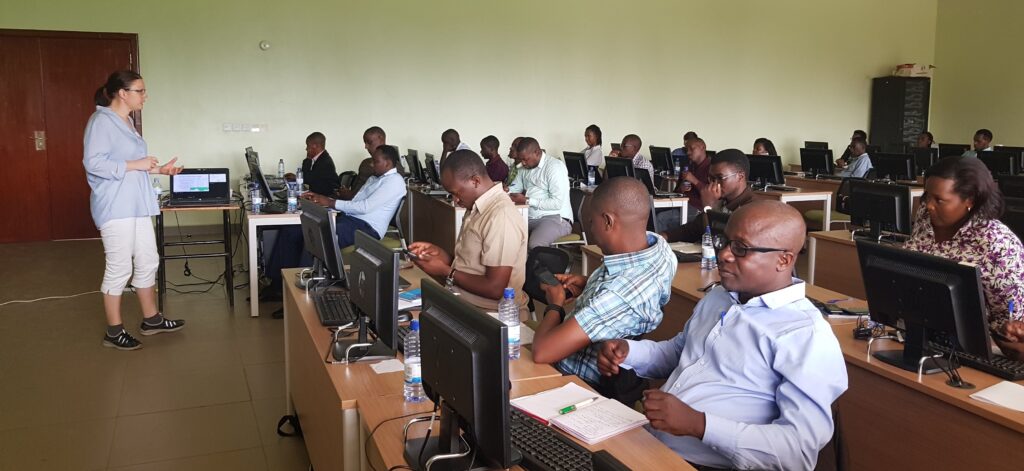United Nations calls for open source
“We must undertake a concerted global effort to encourage and invest in the creation of digital public goods: open source software, open data, open AI models, open standards and open content.” (United Nations, 2020)
As the world crawls through the Covid-19 crisis, the United Nations published their Roadmap for Digital Cooperation directly from the Secretary-General’s office. The roadmap makes an important remark on the use of open source technologies as a global digital public good. Besides open source technologies, the report emphasizes open data, open standards, open AI and open content as a digital public good that are essential for “unlocking the full potential of digital technologies and data to attain the Sustainable Development Goals, in particular for low- and middle-income countries” (2020, 8).
As you imagined, this is a matter that we’re passionate about at Gispo. Open Source software and open data are more than Gispo’s mission, it is why we exist.
Openness in the core of the UN’s roadmap for digital cooperation
In the Roadmap for digital cooperation, UN expresses full commitment on open source software while calling for continuous support on open source software projects:
“Even when the relevant digital public good or open source solution is found, support and additional investment are still required to scale them up and successfully implement them” (2020, p. 9).
Besides building an UN-wide organizational culture for supporting financially open source software projects, there’s an important multiplier effect to it. The open source software projects UN promotes and finances enables unprecedented possibilities for users all around the world. The multiplier effect happens as open source software (e.g. QGIS) and open data (e.g. OpenStreetMap) is a shared digital public good. While anyone in the developing world can use open source software so can the rest of the world. Open source software empowers modern complex IT systems all around the globe, from the leading multinational companies to the most advanced governmental services.
Before open source software, when the UN decided upon a certain software they resolved a single challenge for just a particular process or a project, whereas now as the UN decides to support an open source project, they enable and support solutions for an innumerable amount of organizations and countries.
Openness + Geospatial = invaluable impact
“Your dedication, expertise and guidance – in geospatial data, methods, frameworks, tools, and platforms – is urgently needed. The data needs for the Sustainable Development Goals (SDGs) are great, and time is not on our side. Reliable, timely, accessible and disaggregated geospatial information must be brought to bear to measure progress, inform decision-making and ensure effective and inclusive national and sub-national programs that will chart the path towards the ‘Geospatial Way to a Better World’, to assist in the implementation of the SDGs, and transform our world for the better.” (Secretary-General António Guterres, 2018: message to the United Nations World Geospatial Information Congress)
As Secretary-General Guterres remarked, to transform our world for the better, geospatial data, tools, and frameworks are urgently needed. The implementation of the SDGs requires geospatial solutions that are scalable and open to innovation and sharing; with open source geospatial software, it is possible to equip the UN and the member states for success in the implementation of the SDGs.

“The Geospatial Way to a Better World” is part of the digital revolution the world is going through. For monitoring and protecting the environment, in addition to analyzing and assessing the overall planetary health, geospatial is inherently part of “combating climate change and advancing global sustainability, environmental stewardship and human well-being” (2020, 3).
From theory to practice: Gispo’s customers at the forefront
To address the tremendous business and social challenges related to achieving the SDGs, we at Gispo do our best to help our customers in different UN entities to maximize the benefits from using geospatial data.

Within the UN, we’ve had the pleasure to help different agencies by:
- Advising the customer in the use of open source geospatial software to gain the maximum benefit in their field.
- Creating visually appealing maps and data visualizations from their own data that can be presented to their directives and other audiences who require quick and informative geospatial visualizations.
- Deploying enterprise-level spatial IT solutions based on open source geospatial software.
These are some of the ways how Gispo has helped the UN as well as many other customers to build geospatial solutions that are capable of driving us towards achieving the SDGs.
Just recently, Gispo helped the marvellous team from IIEP-UNESCO to gain and create some insights for using open source geospatial software for educational planning. At the end of the project, we got to participate in a webinar on educational planning titled as “Educational planning with geospatial data” from which you can learn from the video below:
Amélie Gagnon (IIEP) and Topi Tjukanov (Gispo) describing the project outcomes.
If you have any questions or thoughts regarding this blog post, please feel free to get in touch with us. In the meantime, we’ll be reporting on how we are utilizing open source geospatial software and open geospatial data for moving towards those SDGs we all want to reach.
Sources and remarks:
- United Nations. 2020. Secretary-General’s Roadmap for Digital Cooperation -web-based report. Enter the report’s landing page or read directly the document (pdf).
- For more information on IIEP-UNESCO and their geospatial team, see: http://www.iiep.unesco.org/en/our-expertise/geospatial-data-educational-planning-and-management
